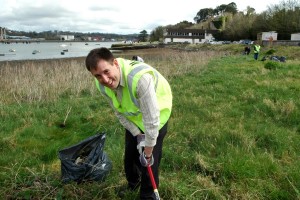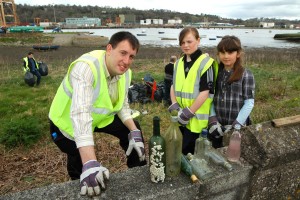(As published in my heritage column, Our City Our Town, Cork Independent on 12 March 2009)
 There is a tree, a blackthorn, I watched for many years. It grew tall embedded in a country stone wall. Its branches took shape splaying into an adjacent field. For many years, this tree bore leaves. Its youth and vibrancy were seen annually. I eventually took the tree for granted and forgot about it. I was too busy to notice it and recently a friend of mine showed me the tree and expressed huge concern for it. Over the years, ivy had grown up the tree embedding itself into the tree’s arteries, stopping the tree from breathing. The ivy had thick branches that hugged and clung strongly. In essence the tree was dying and in past weeks, the tree was cut down; its strangled branches revealing to all present the rotting inner core of the tree.
There is a tree, a blackthorn, I watched for many years. It grew tall embedded in a country stone wall. Its branches took shape splaying into an adjacent field. For many years, this tree bore leaves. Its youth and vibrancy were seen annually. I eventually took the tree for granted and forgot about it. I was too busy to notice it and recently a friend of mine showed me the tree and expressed huge concern for it. Over the years, ivy had grown up the tree embedding itself into the tree’s arteries, stopping the tree from breathing. The ivy had thick branches that hugged and clung strongly. In essence the tree was dying and in past weeks, the tree was cut down; its strangled branches revealing to all present the rotting inner core of the tree.
In the Lee Valley there are multiple trees, some covered with ivy and being strangled, some stretching out and thriving on life. I always think that communities of people are like trees. They can be strong and stretch out with a motivated community of people behind them. However, as noted above, with the ivy and the blackthorn if unattended, a community does not take long to become a wilderness.
People are an important part of my work so they appear alot. I’m interested in people, their identity and how they physically inscribe places with meaning. It is that inscription like some mark on a art canvas that intrigues me. I have an interest in the architecture of life. The lives of people in my head are like rich artworks, constantly being drawn in my head as they relate their story to me. Heritage seems to be passed down the generations through choice. Life affects heritage as heritage affects life. They are both bound up with each other. I’ve also discovered though that heritage is a personal concept and becomes very engaging for the individual and very relevant when family and memories of growing up are told. Heritage becomes real, integral to present and future actions and powerful in developed self esteem, self confidence and self pride. I’ve also discovered that when you bring the individual stories together, heritage can become highly volatile and contested as the community tries to find the middle ground of what to preserve.
The journey down the valley based on the legend of St. Finbarre has brought me to many individuals and communities, all with very relevant talents to survive in the modern age. I always think that Finbarre met similar people with similar talents but in a different age to the 2009 journey. The heritage of the Lee Valley survives in various conditions from complete disappearance to ruins to surviving because it is being used in everyday lives in a personal way. As noted in the last week Inniscarra Community Centre has much nostalgia attached to it. The multiple pictures on the walls and the vast photo collections it possesses of various events. However, its heritage is tied to people and what they have done for the community over the years. Heritage and modern community work in the present. Here heritage is life itself and is bound up with identity and citizenship. Heritage is harnessed to move forward. Heritage is part of the centre’s foundations but also performed with each meeting held to discuss the way forward.

However, whilst on the canvass trail or the long road as an Independent Councillor Candidate in the south east of Cork City I daily continue to gather a number of ideas about community and its relevance to modern society. Daily I come across isolation and people’s choice to disconnect from the world around them. For my own journeys, I can see the value of community of working together. Of course, the nature, depth and value of participation in creating inclusion or bringing people together are significant factors. Through breaking up the respective letters of community, I came up with the following thoughts, which I wish to share..
• The C is for citizen; active citizenship develops a sense of belonging. One is also taking ownership of one’s life direction.
• O is for onus and responsibility. I think that any community organisation in particular has a responsibility to its people and must move forward with a plan as best as possible. I would like to also note here that even local councillors should not only help their constituents but lead a way forward to be pro-active more so than reactive.
• The first M of community is for motivating. A group of people together can be inspiring, encouraging, empowering and enabling.
• The second M is for moving forward. The future is a worrying element for many people. Even though when one reaches it, one is usually wiser and able to deal with it.
• U is for understanding. From my own travels and attending community meetings, every attender has something to bring to a community. As a result, community has various meanings to people. A sense of place infused by a spirit of doing things individually and collectively. Listening and engaging people and mining their talents is important.
• N is for the new generation in the community. Young people bring vibrancy and energy to any work they engage with. Most are also looking for opportunities to develop their talents and to fit in. Community adds to help people develop in personal ways.
• The I is for ideas. Brain storming and a plan on paper is important. People need direction, something to work toward. Otherwise, the heart of the community will become stale and disillusioned.
• T is for being tolerable of the ‘other’. Working together as a team, getting everyone involved is important. People working together can stop the decline of local living places and bring them to renewed states of stability and viability.
• The Y of community is about the yearning to be part of something- to do something purposeful, to hone our personal talents, to create and sustain strong bonds.
The above are just ideas and in fact there is probably a myriad of other ideas that I have not touched upon. If heritage is about life itself, then community must be a core element in developing a sense of identity and a sense of pride. So what are you waiting for, go get stuck into your local community. If anything, you won’t return to the same place from which you started….






